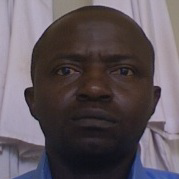
Jean Claude Kamgang
Work place: ENSAI-Université de Ngaoundere, Ngaoundere, Cameroon
E-mail: jckamgang@gmail.com
Website:
Research Interests: Medicine & Healthcare
Biography
Jean Claude Kamgang is the Acting Head of department of Mathematics and Computer Sciences of the National School of Agro–Industrial Sciences (ENSAI) of University of Ngaoundere, Cameroon. He is Associate Professor at the University of Ngaoundere. Many years before, he was Assistant Lecturer in Agricultural Grammar School of St Germain en Laye, France. Hiis research focuses on Control and Stabilization of Mechanical systems. Actually, he works on Modeling and analysis of epidemiological systems, modeling vector borne diseases, specifically modeling some aspects of the malaria therapy. He has published widely in international journals and conferences.
Author Articles
Meta-Population Modelling and Simulation of the Dynamic of Malaria Transmission with Influence of Climatic Factors
By Justin-Herve NOUBISSI Jean Claude Kamgang Eric Ramat Januarius Asongu Christophe Cambier
DOI: https://doi.org/10.5815/ijitcs.2017.07.01, Pub. Date: 8 Jul. 2017
We model the dynamic of malaria transmission taking into account climatic factors and the migration between Douala and Yaounde´, Yaounde´ and Ngaounde´re´, three cities of Cameroon country. We show how variations of climatic factors such as temperature and relative humidity affect the malaria spread. We propose a meta-population model of the dynamic transmission of malaria that evolves in space and time and that takes into account temperature and relative humidity and the migration between Douala and Yaounde´, Yaounde´ and Ngaounde´re´. More, we integrate the variation of environmental factors as events also called mathematical impulsion that can disrupt the model evolution at any time. Our modelling has been done using the Discrete EVents System Specification (DEVS) formalism. Our implementation has been done on Virtual Laboratory Environment (VLE) that uses DEVS formalism and abstract simulators for coupling models by integrating the concept of DEVS.
[...] Read more.Other Articles
Subscribe to receive issue release notifications and newsletters from MECS Press journals